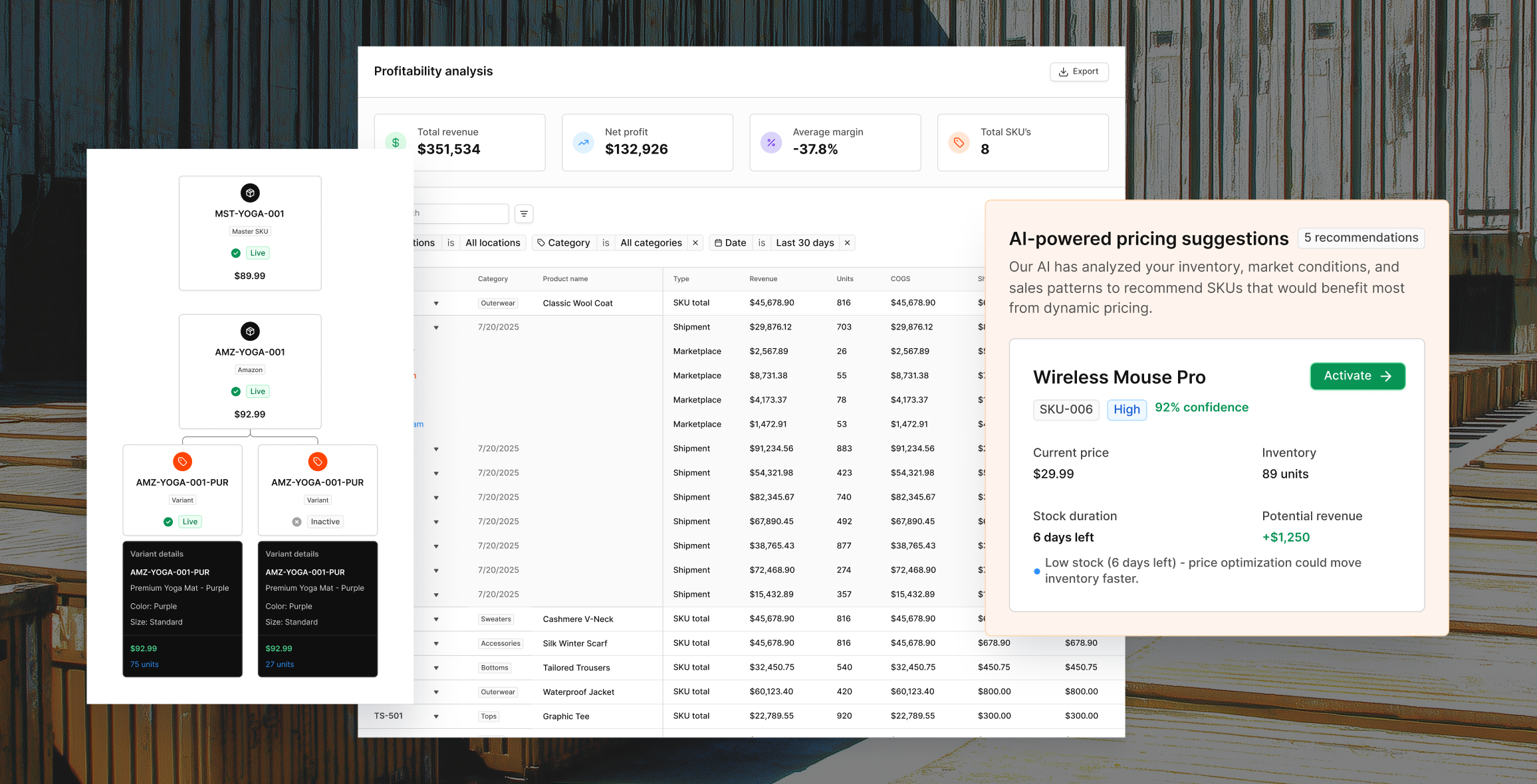Fulfillment software, explained like you are running a warehouse on a Tuesday morning



Request A Demo
Take 30 minutes to see how Redo can help you retain more revenue through a more cohesive post-purchase experience for your buyers.
If you run a DTC brand, fulfillment is not a back-office chore. It is the part of your customer experience that decides whether someone buys from you again. When people say fulfillment software, they mean the system that helps you receive orders, manage inventory, pick and pack, print labels, and hand off to carriers with as few clicks as possible. The goal is simple, get orders out fast and accurately so customers trust you. shopify.com
Fast definition check
Fulfillment is the process of receiving, managing, packing, and shipping ecommerce orders. Software exists to make that process reliable and scalable. That is the baseline. Salesforce
From a recent interview with Suz Duke, GM of Fulfillment Software at Redo, a theme kept popping up, speed with fewer errors. In her words, “the ideal is never having to click anything, and it is just processing automatically.”
Below is the no-fluff explainer, then we map it to what Redo does, and finally a checklist you can run tomorrow morning.
Why fulfillment software is no longer optional
Three reasons:
- Customer expectations are high
- If shoppers can get a three day delivery instead of five, they remember. Fulfillment software shortens the time between click and doorstep by automating the boring parts, like label selection and routing, so humans focus on exceptions.
- Margins are thin
- When labor, labels, and returns eat your margin, the system has to reduce touches and mistakes. That is automation, not just reports.
- Your tech stack got crowded
- You have a store, a returns portal, an order tracker, support channels, and maybe multiple warehouses. Fulfillment software is the glue, it pulls orders in, pushes statuses out, and keeps inventory truthful across tools. Good software here is what makes the whole stack feel like one platform. SelectHub
Core capabilities you should expect from modern fulfillment software
Think of these as table stakes. If your current setup lacks any of them, you are paying for it in time and errors.
- Label buying and carrier pooling
- Should support multiple carriers, negotiated rates, and rules that pick the best option per order automatically.
- Automation rules
- Examples, if a customer chose Priority Mail at checkout, auto select USPS Priority at packing. No extra clicks. In Suz’s words, “that is our goal of automations, that you never have to do anything manual.”
- Inventory visibility
- Single source of truth across locations, so you know if an item is actually available before you promise a delivery date. SelectHub
- Channel integrations
- Orders should flow from your store or marketplaces into the system without manual entry, and status updates should sync back out to customers. Tech Times
- Exception handling
- Address problems, backorders, and split shipments handled in a way that does not break your day. A big one here is address verification, because failed deliveries hit support and cost money. More on that below. Smarty
How Redo ties fulfillment into the rest of your stack
Suz described fulfillment as the center of operations. That is a strong statement, but it makes sense when you look at how the parts connect.
Checkout Optimization <> Shipping
“Our shipping software works really well with checkout optimization. You can A/B test shipping methods at checkout, and even do things like whatever the UPS Ground rate is, plus 1 dollar.”
Why that matters, you can balance conversion and margin. First-time buyers might see lower shipping. High returners might see higher. The software then uses those chosen methods to auto select the right label in the warehouse.
Support <> Shipping
“Your support team can see order status in one place. If it is not fulfilled yet, they can update the address, it syncs to Shopify and to our shipping software, no duplicate work.”
Support tickets drop when the tool does two things well, shows status in context and lets agents fix it right there.
Proactive address verification
“If an address comes through as unverified, we automatically put the order on hold and email the customer to update it. Once they fix it, we release it into the shipping queue.”
Industry data backs this approach, better address validation reduces failed deliveries and cuts service time. It also prevents the classic support fire drill. Smarty+1
Timely playbook for peak season and promos
People are either prepping or already in volume spikes. Suz’s quick hits are practical.
1) Revisit carrier strategy now
Some brands shift to cheaper regional carriers to protect margin at volume. Others upgrade to higher service levels to reduce loss and theft risk during chaotic periods. Redo recently secured strong UPS rates, and there are also Amazon options, so the point is to pick based on your goals, not habit. Independent guidance for 2025 peak season supports proactive carrier planning and fee awareness. Transportation Insight
2) Update your automations
If you changed carriers or products, your rules should reflect that. The test, if your packer ever clicks a dropdown, a rule is missing. Suz again, “if you are clicking anything while printing a label, we could build an automation for it.”
3) Live by a dashboard and SLA promise
Set a fulfillment promise, like two days, then work your queue against that number. If you start the day knowing how many orders must go out to keep the promise, your team can pace correctly.
4) Use bulk shipments
Group identical orders and handle them in one pick and print run. Pick fifty of the same jeans today instead of grabbing that bin ten times. It reduces travel and context switching.
5) Make the packing slip useful
You can customize it to add a seasonal note or instructions. It sounds small, but it gets noticed, and it reduces support friction when the slip answers simple questions.
Warehouse routes, real speed gains
Two ideas matter in picking speed, how you store items and how you route people. There is good research showing that better storage allocation and smarter routing can cut picker travel time significantly. Some studies report gains around thirty percent on travel, which is exactly the kind of time brands feel during busy weeks. MDPI
Here is how Redo is approaching it.
“We built a warehouse builder that maps every bin, not just A to Z. The system knows that BW13 is near G39, so it can generate a faster route. When you start a pick session for 15 orders, it gives you the 15 that create the most efficient route.”
That is the move from shipping software into true warehouse intelligence. It is also why Suz is excited about the next chapter.
“We are getting pulled toward a full warehouse management system. Inventory will be the source of truth, with POs and receiving, and efficient picking on mobile devices.”
If your current tool cannot model the floor or group orders into fast routes, you will spend that time on shoe leather.
Address issues move upstream, support volume moves downstream
This is one of the simplest wins from the interview.
- If an address looks wrong, auto hold the order.
- Email the customer a link to fix it.
- Release to the queue after validation.
Vendors who specialize in address accuracy report that validation and autocomplete reduce failed deliveries and cut customer service time. That lines up with what Redo is seeing when merchants move the fix earlier in the flow. Smarty
Quick checklist to diagnose your fulfillment setup
You can run this in thirty minutes.
- Do you have written rules that choose carrier and service automatically for common scenarios
- Can support edit addresses and variants on an unfulfilled order without leaving the ticket view
- Do you hold and email on unverified addresses, or do you ship and hope
- Does your dashboard show an SLA promise and how many orders you must ship today to keep it
- Do you have a bulk shipments view to group identical orders for one pick and print run
- Can your system map your warehouse layout, then route pickers through the closest path
- Is inventory authoritative across locations, or does your team reconcile daily in spreadsheets SelectHub
If you answered no to more than two, there is easy time on the table.
Where Redo fits
Based on Suz’s walkthrough, Redo’s Fulfillment software focuses on automation first, then connects across Checkout Optimization, Support, Shipping, Inventory, and upcoming WMS features. The practical takeaway, it reduces clicks and errors where they create the most cost, picking and packing, label buying, and address exceptions. That is how you get to faster ship times without burning out your team.
“We care about what our merchants care about, and shoppers want things faster. The more efficient you can be, the less you spend in the warehouse, and the faster customers get packages.”
If you want a hands-on look, the best demo is to pick a week of orders and compare your current process against Redo’s automation and routing flow. You will spot the friction in minutes.
Key Insight
Fulfillment software is the lever between margin and customer happiness. Use automation to kill clicks, validate addresses before you print, route pickers like you route delivery trucks, and choose carriers based on goals, not habit. Redo is building the platform version of that idea, with automation today and warehouse intelligence pushing into full WMS next.
CTA: Want to see the warehouse builder and efficient pick sessions in action, book a quick session with Suz and the Redo team.
Check out the full Interview here
About Redo
Redo helps ecommerce brands turn post-purchase moments into lasting relationships.
Use AI-powered return flows, exchange-first logic, instant credit, and analytics to understand not just what customers bought, but why they come back.








